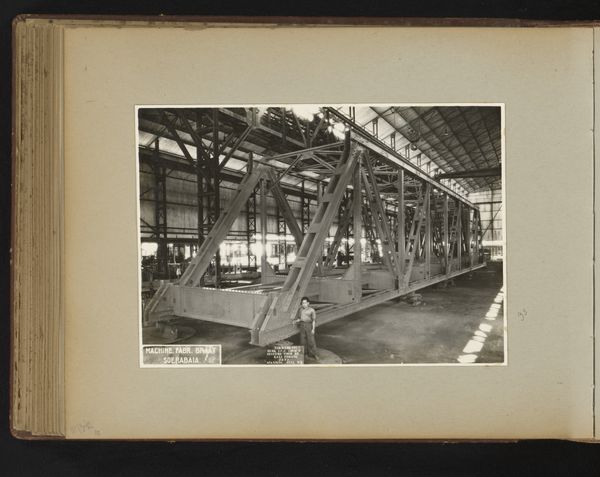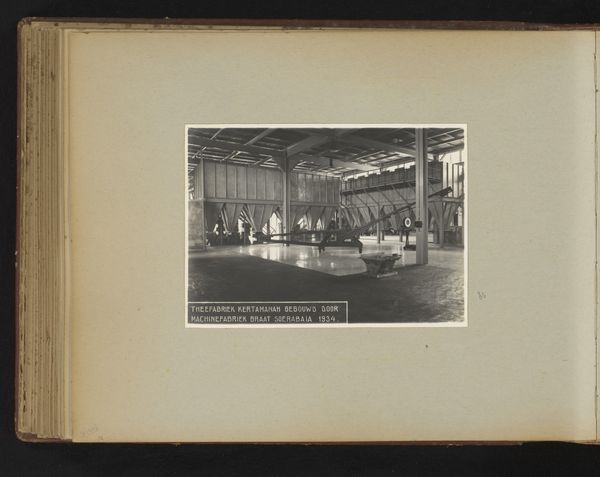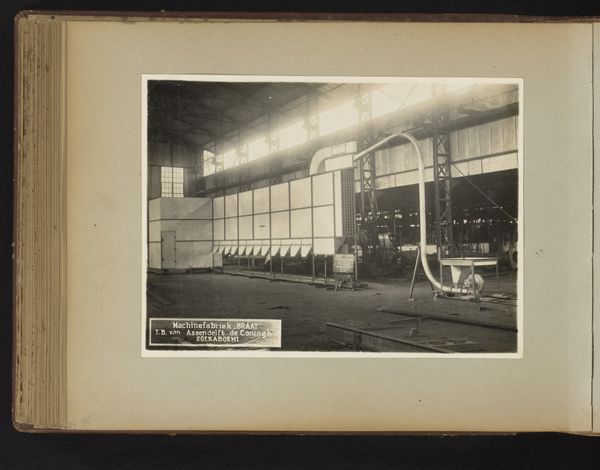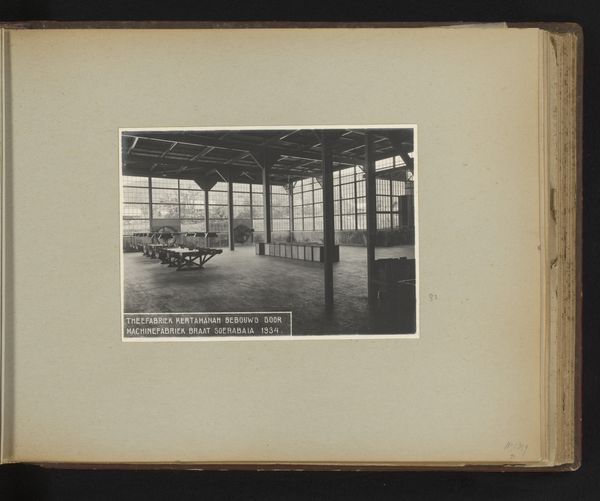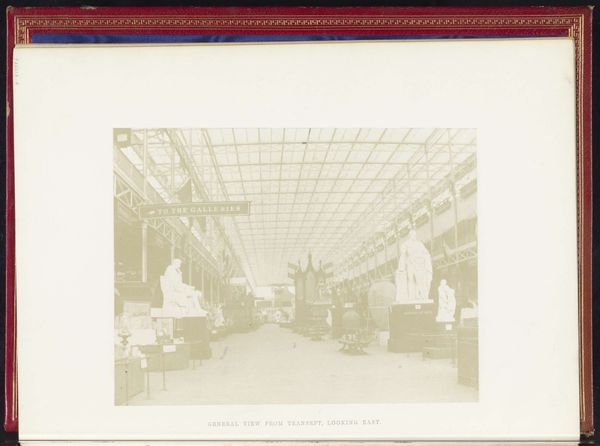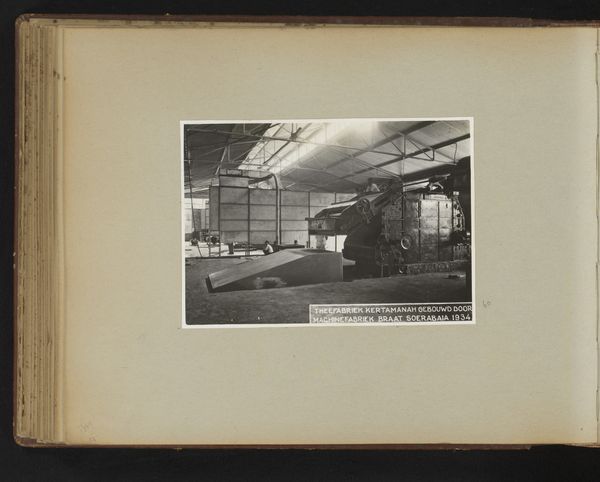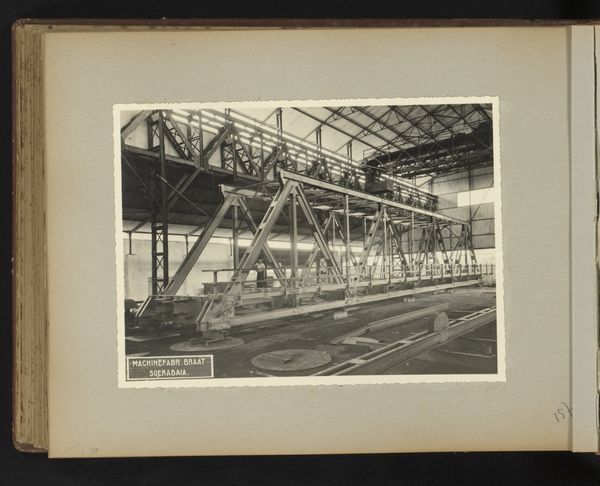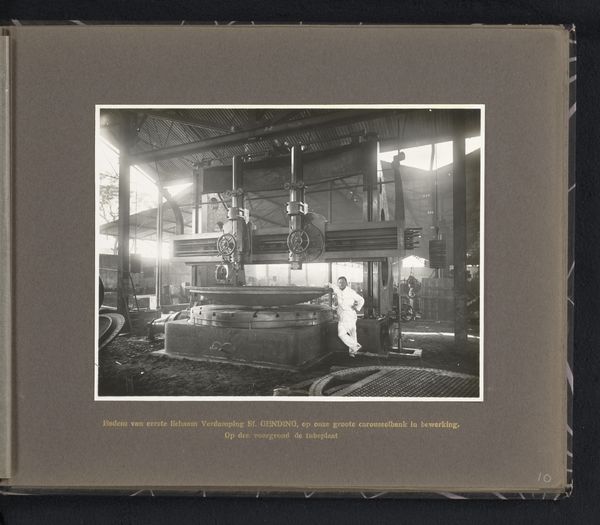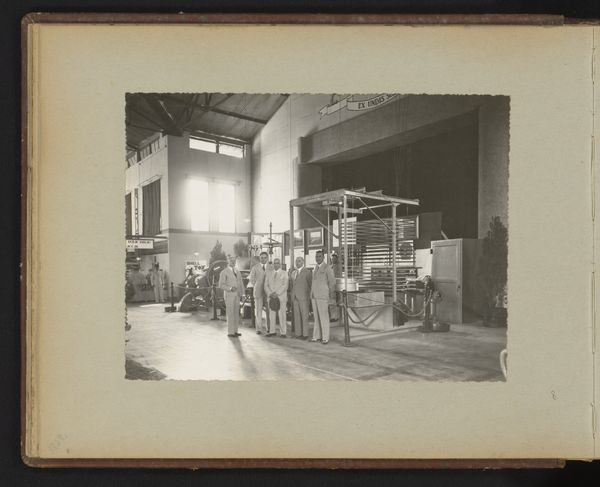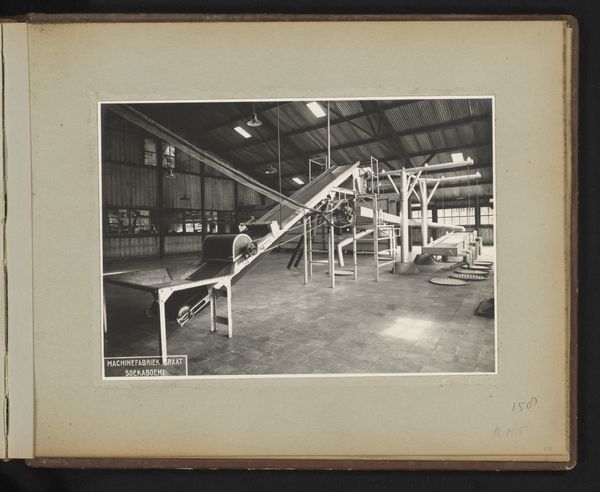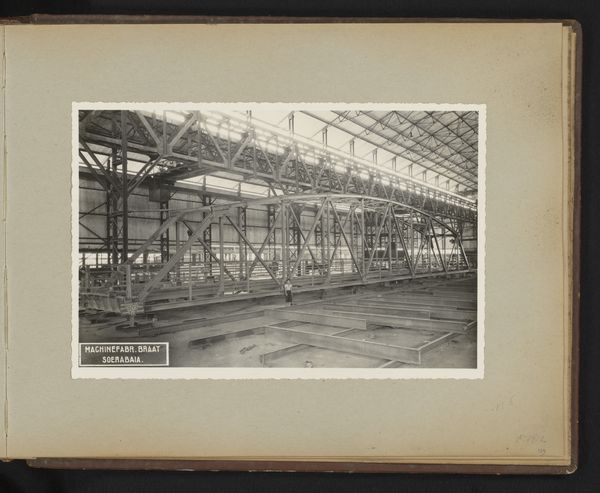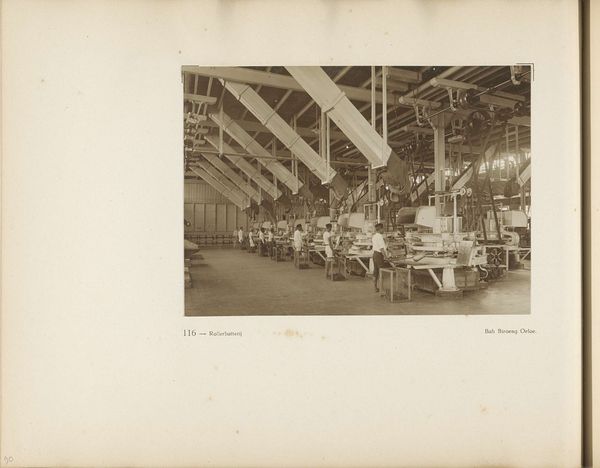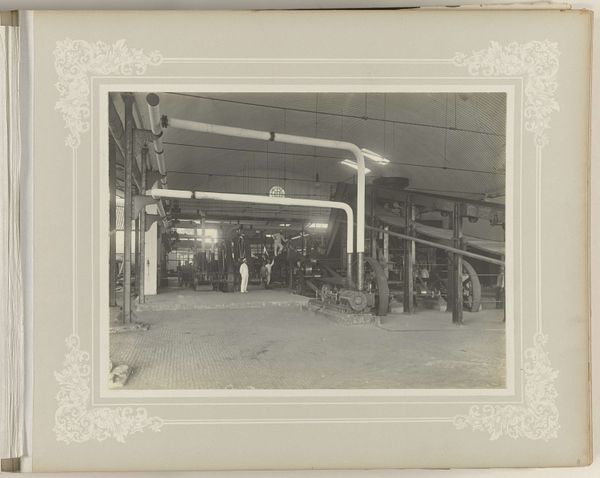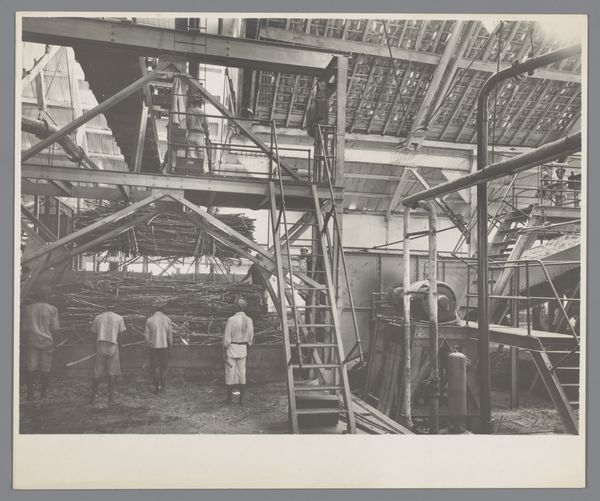
print, photography, gelatin-silver-print
# print
#
photography
#
gelatin-silver-print
#
realism
#
monochrome
Dimensions: height 166 mm, width 227 mm, height 250 mm, width 320 mm
Copyright: Rijks Museum: Open Domain
Curator: This gelatin silver print, dating possibly to 1935, is titled "Theesorteerinstallatie," and the artist is listed as anonymous. It resides here at the Rijksmuseum. What are your initial thoughts? Editor: Bleak. Strikingly bleak. The harsh geometry of the industrial architecture dominates, doesn't it? The way the light reflects off the metal... almost clinical. Curator: Indeed. The photograph depicts a tea sorting installation, offering a glimpse into the mechanized processes of commodity production in the early 20th century. We should consider labor, exploitation, and how this image might function as propaganda for industrial progress, despite its apparent austerity. Editor: I'm drawn to the composition itself. The lines—the conveyor belts, the girders of the roof—converge in a way that emphasizes the depth of the space. It is beautifully structured; even the tonality offers a complete range from dark to light that defines the planes perfectly. Curator: The anonymous nature of the photographer also plays a crucial role in understanding the artwork. Were they commissioned? What political stance does the image assume towards technological advancement and worker alienation, for example? Editor: It could also simply reflect an aesthetic choice of the photographer, to embrace this new industrial sublime with a certain level of precision and attention to light, shadow, form, and the overall abstractness within a utilitarian framework. Curator: I can see your point, however, in considering class dynamics within photography, it can't simply become a conversation solely about aesthetics, as this ignores how such images helped build economic empires. Editor: True, although I think we're both ultimately in agreement. Perhaps its value resides precisely in its visual tension—between the bleak depiction of work and the undeniable appeal of its composition. Curator: Yes. Ultimately, this piece is a provocation for dialogue on both exploitation and human achievement. Editor: And one that leaves me strangely hopeful that people have the chance to see it and appreciate what they see for themselves.
Comments
No comments
Be the first to comment and join the conversation on the ultimate creative platform.
